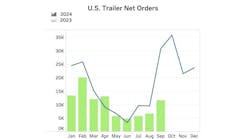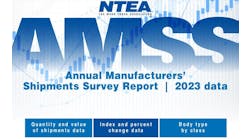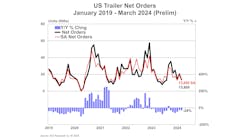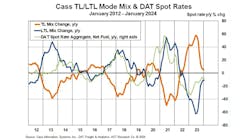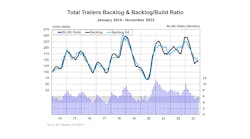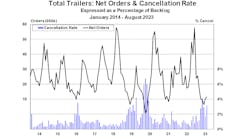ACT Research has raised forecasts “slightly” from October thanks to easing supply-chain constraints, according to ACT’s latest release of the North American Commercial Vehicle OUTLOOK.
Current economic activity aside, as long as inflation remains elevated, the Fed will continue its aggressive response, increasing the chance of a sharper decline in economic activity, the report notes. Looking to 2023, Class 8 forecasts are unchanged, while Classes 5-7 reflect more of a pull forward in demand.
“Our 2023 forecasts belie current economic activity,” ACT President and Senior Analyst Kenny Vieth said. “Using Class 8 as an example, record orders in September followed by robust preliminary orders in October, large backlogs, a string of record-low cancellation months, and easing supply-chain constraints, all point to continued strength into 2023.” He added,
Vieth referred to the maxim “Don’t fight the Fed” as one analysts tend to adhere to.
“The longer inflation remains elevated, the more aggressively the Fed will respond with higher interest rates,” he said. “This, in turn, increases the chances of a sharper decline in economic activity, and 1) results in fewer commercial vehicles required to facilitate this lower level of activity, and 2) will likely exacerbate downward pressure on spot and contract rates, adversely impacting carrier profitability.”
The critical factor in forecasting 2023 is determining when lower freight volumes and higher borrowing costs compress carrier profits sufficiently “to kill the cycle,” Vieth continued.
“ACT is not yet willing to chase volumes all the way up the ladder in 2023,” Vieth said. “Our current thinking is the negatives begin to weigh on orders as soon as [the first half of 2023] and more meaningfully by the second half of 2023; however, with prebuying ahead of the California Air Resources Board (CARB) mandates that start in 2024 and considering carrier profitability strength, there is a compelling case to be made for production volumes to be sustained at 2022 levels through the end of 2023.”
The N.A. CV OUTLOOK forecasts the future of the industry, looking at the next 1-5 years, with the objective of giving OEMs, Tier 1 and Tier 2 suppliers, and investment firms the information needed to plan accordingly for what is to come.
